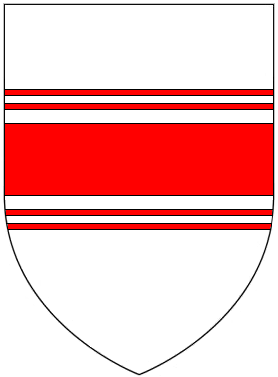
Bartholomew de Badlesmere, 1st Baron Badlesmere was an English soldier, diplomat, member of parliament, landowner and nobleman. He was the son and heir of Sir Gunselm de Badlesmere and Joan FitzBernard. He fought in the English army both in France and Scotland during the later years of the reign of Edward I of England and the earlier part of the reign of Edward II of England. He was executed after participating in an unsuccessful rebellion led by Thomas, 2nd Earl of Lancaster.

Dunstanburgh Castle is a 14th-century fortification on the coast of Northumberland in northern England, between the villages of Craster and Embleton. The castle was built by Earl Thomas of Lancaster between 1313 and 1322, taking advantage of the site's natural defences and the existing earthworks of an Iron Age fort. Thomas was a leader of a baronial faction opposed to King Edward II, and probably intended Dunstanburgh to act as a secure refuge, should the political situation in southern England deteriorate. The castle also served as a statement of the earl's wealth and influence and would have invited comparisons with the neighbouring royal castle of Bamburgh. Thomas probably only visited his new castle once, before being captured at the Battle of Boroughbridge as he attempted to flee royal forces for the safety of Dunstanburgh. Thomas was executed, and the castle became the property of the Crown before passing into the Duchy of Lancaster.
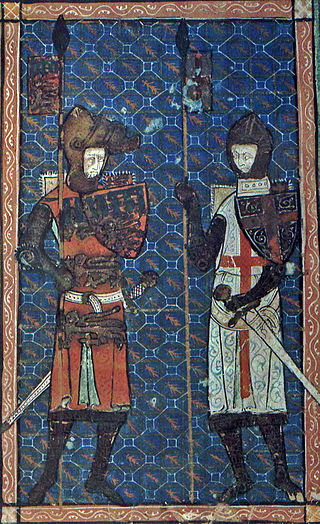
Thomas, 2nd Earl of Lancaster was an English nobleman of the first House of Lancaster of the royal Plantagenet Dynasty. He was Earl of Lancaster, Leicester, and Derby from 1296 to 1322, and Earl of Lincoln and Salisbury jure uxoris from 1311 to 1322. As one of the most powerful barons of England, Thomas was one of the leaders of the baronial opposition to his first cousin, King Edward II.

The Lord High Constable of England is the seventh of the Great Officers of State, ranking beneath the Lord Great Chamberlain and above the Earl Marshal. This office is now called out of abeyance only for coronations. The Lord High Constable was originally the commander of the royal armies and the Master of the Horse. He was also, in conjunction with the Earl Marshal, president of the court of chivalry or court of honour. In feudal times, martial law was administered in the court of the Lord High Constable.

Henry, 3rd Earl of Leicester and Lancaster was a grandson of King Henry III of England (1216–1272) and was one of the principals behind the deposition of King Edward II (1307–1327), his first cousin.

John Beaumont, 4th Baron Beaumont KG (1361–1396) was an English military commander and Admiral who served in the Hundred Years' War against the partisans of Antipope Clement VII.
Roger Damory, Lord d'Amory, Baron d'Amory in Ireland, was a nobleman and Constable of Corfe Castle.

The Barony of Halton, in Cheshire, England, comprised a succession of 15 barons and hereditary Constables of Chester under the overlordship of the Earl of Chester. It was not an English feudal barony granted by the king but a separate class of barony within the County Palatine of Chester.
Lewis de Beaumont was Bishop of Durham during the last half of the First War of Scottish Independence.
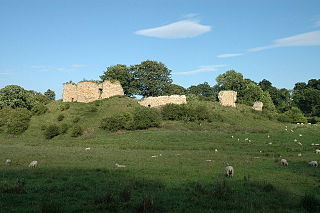
Mitford Castle is an English castle dating from the end of the 11th century and located at Mitford, Northumberland. It is a Scheduled Ancient Monument and a Grade I listed building, enlisted on 20 October 1969. The castle is also officially on the Buildings at Risk Register. The Norman motte and bailey castle stands on a small prominence, a somewhat elliptical mound, above the River Wansbeck. The selected building site allowed for the natural hill to be scarped and ditched, producing the motte.
Events from the 1310s in England.
Sir Walter fitz Gilbert of Cadzow, 1st Laird (Lord) of Cadzow was a Scottish nobleman. The husband to Mary Gordon of Huntly, they wed in 1308 in Cadzcow, Lanarkshire, Scotland. He is the first historically confirmed progenitor of the House of Hamilton, which includes the Dukes of Hamilton, Dukes of Abercorn and Earls of Haddington.
Isabel de Verdun, Baroness Ferrers of Groby was an heiress, who was related to the English royal family as the eldest daughter of Elizabeth de Clare, herself a granddaughter of King Edward I of England. When she was a child, Isabel was imprisoned in Barking Abbey, along with her mother and half-sister, after her stepfather had joined the Earl of Lancaster's ill-fated rebellion against King Edward II. Her husband was Henry Ferrers, 2nd Baron Ferrers of Groby.
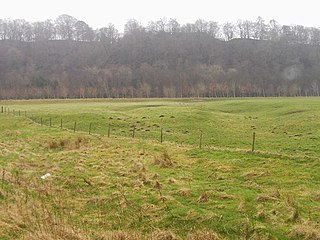
Liddel Strength is an ancient monument near Carwinley, Cumbria, in northwest England. It consists of the earthwork remains of an Anglo-Norman border fortification destroyed by the Scots in 1346 and fragmentary remains of a pele tower subsequently built upon the site. It lies on a cliff on the south bank of the Liddel Water, overlooking the Liddel Water's confluence with the River Esk; the last high ground before the Esk reaches the Solway Plain. The Liddel Water and the Esk (downstream) form the modern Anglo-Scottish border; formerly they were the southern boundary of the Debatable Lands.

Ralph de Greystoke, 1st Baron Greystoke, was an English peer and landowner.

The Lilburns are a family originating in Northumberland, United Kingdom, and were members of the country's lesser gentry throughout the Late Middle Ages up until the 17th century. The family name Lilburn derives from the original home of the family, Lilburn, Northumberland.
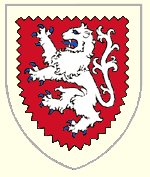
Sir Thomas Grey of Heaton Castle in the parish of Cornhill-on-Tweed, Northumberland, was a soldier who served throughout the wars of Scottish Independence. His experiences were recorded by his son Thomas Grey in his chronicles, and provide a rare picture of the day-to-day realities of the wars.

Luca Fieschi was a Genoese nobleman and Roman Catholic cardinal from 1300.
Gilbert Middleton was an English knight with lands in Northumberland who rebelled and was executed for treason.















